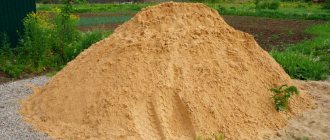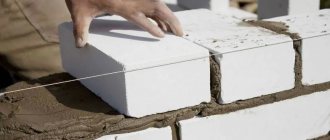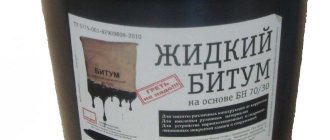Before you buy concrete or asphalt concrete mixture, it’s a good idea to understand how they differ from each other. Asphalt concrete pavement is a dense compressed mass of artificial material, which includes powders of mineral origin, various aggregates and bitumen. Due to its characteristics, the mixture is widely used in road construction.
AB appeared in the distant past. It was used by the Incas when they laid roads. AB came to Europe along with the colonialists returning to their homeland. Gradually, the new material begins to displace the wooden and stone paving stones familiar to city residents. Today, asphalt concrete is used almost all over the world.
What is the difference between asphalt and asphalt concrete?
Many people confuse the concepts of asphalt and asphalt concrete mixture. Despite the similarity of name, there is a difference between them.
What is asphalt? It is of natural origin. Formed during oxidation and thickening of oil. This happens when it comes into contact with outside air. Asphalt deposits can be represented by layers, lakes and individual vein deposits.
Asphalt composition. The word "asphalt" is of ancient Greek origin. It can be translated into Russian as “mountain resin.” The substance is highly flammable. The composition consists of 70% petroleum bitumen.
The largest sources of naturally occurring asphalt are the Dead Sea, located in Israel, and Peach Lake on the island of Trinidad. The Indians extracted asphalt from blocks that floated to the surface of the water, weighing 1 ton.
This material was used for sealing ship hulls, various buildings, and in the production of paint and varnish mixtures.
Types of asphalt. It can be natural or artificial. The supply of natural asphalt is not endless. Now this material is used to create paints for painting, as well as special varnishes. During road construction in asphalt concrete pavement, the liquid part of bitumen is replaced with the solid part. In addition to saving natural resources, this makes it possible to increase the strength of the material.
Making asphalt at home
Laying asphalt is a task that relates not only to capital construction, but also to individual construction. Each homeowner, if desired, can independently prepare the mixture to make a sidewalk, path or driveway on their own property. As a rule, such asphalt concrete pavements do not need to withstand high loads, so the manufacturing requirements are simpler. The finished asphalt has sufficient characteristics, so it will last more than a year without problems. Let's look at ways to prepare asphalt concrete yourself.
Classic method
The standard recipe requires the following "ingredients":
- quarry or river sand;
- crushed stone measuring 30 - 40 mm;
- bitumen (bitumen resin will do).
The container will be a bucket or metal barrel. Cooked over an open fire, such as a campfire.
Crushed stone and sand are taken (ratio 2:1), filled with water and “cooked” over a fire with periodic stirring. At this stage, the bitumen base is prepared: bitumen is melted in a bucket (it should boil), after which a plasticizer is added. If the latter is not available, you can use regular detergent or shampoo.
When the water in the barrel with crushed stone begins to boil, heated resin is added there. The water added initially is needed to ensure that the sand and crushed stone do not overheat above +100 degrees Celsius. Stir the mixture until the water completely boils away. Use ready-made asphalt hot.
Figure 7. Materials for asphalt concrete pavement
Application of old asphalt concrete pavement
A new mixture can also be made from old asphalt. The manufacturing technology is almost the same as that used for the new composition, only with some differences. If we are talking about large scales, then thermal profiling technology is used. This is when the old asphalt surface is dismantled, crushed, loosened and melted.
The manufacturing process comes down to several stages:
- Using a sledgehammer or impact mechanism, the old canvas is “removed”. As a rule, the cushion is not disassembled; only a layer of bitumen is used.
- The old coating needs to be recycled. First, it is crushed into small fractions, no larger than 40 mm in size. Next, add water and melt it. Bitumen is added again, but in reduced quantities - 10 kg per 100 kg of old asphalt.
- The following steps are similar to the production of new asphalt concrete pavement.
Method of working with cold asphalt
This method is relevant if processing of a large area is required. In the case of pothole repair, it is not suitable. The manufacturing method became popular not so long ago, no more than 10 years ago. The principle is similar to cold welding. The main component is the same bitumen, which can be worked with even at sub-zero temperatures.
This fabric does not require heavy loads, so it is used for beautifying the local area. The advantage of the method is that it is applicable in situations where it is not possible to work with hot compounds.
Figure 8. Dismantling asphalt concrete pavement
Composition of asphalt concrete mixture
Asphalt concrete contains many components. Specific materials are used depending on local climatic conditions.
Composition of asphalt concrete. 30-60% of crushed stone or gravel is added to the mixture, which is mined from deposits of rocks of sedimentary or volcanic origin, as well as from waste from the metallurgical industry. This material has a great influence on the final properties of the coating.
The voids between the stones are filled with sand. The component also makes it possible to give the mixture greater homogeneity and density. The amount of bulk material is strictly limited. Its excess can negatively affect the wear resistance of the coating. Instead of sand, ground slag or crushed stone is sometimes used.
Up to 20% of the total mass of the asphalt concrete mixture is mineral powder, which is crushed rocks of sedimentary or dolomite origin, as well as heavy industrial waste. They allow you to increase the density of the mixture, as well as its resistance to water and mechanical damage.
The choice of bitumen grade is influenced by the climatic zone where the coating will be used and the planned load on the road surface. From 25 to 90 kilograms of this material are laid per ton of mixture. The specific figure depends on the installation technology and the porosity of the fillers used. To improve performance characteristics, various components are added to bitumen.
Asphalt concrete characteristics. The physical and mechanical properties of the mixture depend on its brand. The following general properties can be distinguished:
- compressive strength - normalized for 0°C - 9-13 MPa, for 20°C - 2-2.5 MPa, 50°C - 0.9-1.5 MPa;
- density - 2000-2800 kg/m³;
- water resistance - 0.6-0.95;
- coefficient of internal friction (shear resistance) - 0.62-0.87;
- shear adhesion at t=50°C - 0.22-0.50 MPa;
- crack resistance - 2-7.5 MPa;
- water saturation - 1-4% for dense, 4-10% for porous;
- porosity for cold asphalt concrete mixtures - 18-21%;
- frost resistance of F15-50 depends on the road-climatic zone.
Types and grades of asphalt concrete
Asphalt concrete is a building material obtained artificially. It is used for the construction of highways, airfields, small sites and other areas that require asphalt concrete pavement.
Classification of asphalt concrete. Type of filler and brand
There are quite a large number of methods and technologies for the production of asphalt concrete mixtures. The properties of the resulting product are influenced by both the characteristics of the material and the manufacturing methods used, which differ depending on the manufacturer.
Characteristics of asphalt concrete pavement
- 1. Asphalt concrete must contain sand, bitumen (a solid or resin-like substance) from 2 to 9%, as well as various minerals.
- 2. It is possible to contain a stone fraction, but its presence is not necessary. But, despite this, many asphalt concrete pavements are made on the basis of crushed stone.
- 3. The composition of the future asphalt concrete pavement also includes various additives. The main function of additives is to ensure wheel adhesion to asphalt concrete and increase roughness.
Porous coarse asphalt
Asphalt concrete grades
The concept of “brand” of asphalt concrete is quite broad. The main requirement for all brands of asphalt concrete pavements is that the materials used in production must comply with GOST 9128 - 2013.
The complexity of the process lies in the fact that a large number of physical and chemical factors are used to determine the brand. The parameters differ for different components of asphalt concrete mixtures.
For example, high-density asphalt concrete made from rocks contains higher and higher quality indicators than asphalt concrete pavement made from crushed stone. But despite the difference in the resulting quality, the materials taken belong to grade I, but differ only in density and resistance to various types of influences.
High-density asphalt concrete made from rocks contains higher and better quality indicators than asphalt concrete pavement made from crushed stone. But despite the difference in the resulting quality, the materials taken belong to grade I, but differ only in density and resistance to various types of influences...
The grade of asphalt concrete divides the materials used into:
- 1. Having high performance for stone and bitumen.
- 2. Materials with average parameters. Basically, such materials are suitable for construction work of all types.
- 3. Materials that cannot be used in harsh climates or under increased load.
Types of stamps
Cast asphalt
There are three main grades in the production of asphalt concrete:
- Number I.
- Number II.
- Number III.
The first brand includes a fairly large amount of road materials. This includes high-density and highly porous materials. This coating is made on the basis of gravel and sand. These mixtures show high quality, developed for special conditions. The composition contains bitumen, quartz sand, and rocks. Asphalt concrete coating of this brand is quite widely used in construction work. Grade I guarantees high quality coating.
This grade contains high-density, porous sand types. Compared to the first brand, the coating of the second brand is distinguished by its ability to withstand various climatic conditions and loads. These parameters for the second brand are slightly lower. But despite this, the second grade is more common than grade I asphalt. The coating is used in the construction of city streets and most roads.
This brand does not contain crushed stone, but contains minerals. The density of this brand is at a relatively high level, but the strength is significantly lower compared to stone-based coatings. This coating is used for the construction of roads that do not require heavy loads. It is also used for “pothole repair”.
Cold asphalt
Types of Asphalt Concrete Used
The basic properties of an asphalt concrete pavement depend both on the volume of filler and on its characteristics. The first three types include crushed stone and gravel. The remaining two types contain a large amount of sand.
There is the following division of asphalt concrete by type:
- Type A - 55 - 65% stone in the coating composition. Type A mixtures are used only hot. They differ only in grain size.
- Type B - contains 45 - 55% stone. The mixture can be used both hot and cold. The designation for this type uses the letter “x”, which means the mixture is used cold.
- Type B - the percentage of stone varies from 35 to 45. The coating is made using both cold and hot mixtures.
- Type G - during the manufacturing process, the composition includes only sand, extracted through screening, as a result of crushing rocks. The material is quite wear-resistant.
- Type D - the mixture for this coating is obtained by crushing rocks.
All asphalt concrete pavements vary in cost and have different applications, depending on the type, brand, and characteristics of the material used.
Source: https://nerudnye-spb.ru/blog/tipy-i-marki-asfaltobetona
Requirements for asphalt concrete mixtures
One of the most important parameters of asphalt concrete is the pavement compaction coefficient. This parameter characterizes the quality of installation. The value is determined empirically. According to current standards, for cold compounds the value should be less than 0.96, for hot compounds 0.99.
To measure the compaction coefficient, a roll is cut out in the road surface. It is dried to determine the specific gravity. Then the sample is heated, crushed, and treated under pressure. The coefficient is determined by the ratio of the density obtained during testing to the norms prescribed in the quality standards.
To calculate the consumption of asphalt concrete per 1 m² of pavement, use experimental indicators per 1 cm of height:
- fine-grained mixtures of types A, B, C - 24.6-25.7 kg;
- coarse-grained - 24.2 kg;
- ShMA - 25.8 kg;
- cast with a density of 1500 kg/m³ - 15.4 kg.
Asphalt production technology
The main steps in the production of any asphalt concrete mixture are preparation of components, mixing and storage in a bunker. Manufacturing is carried out at stationary and mobile (located near the road construction site) factories.
General technological steps:
- Preparation of mixture components. Mineral fillers are crushed and separated into fractions using a screen, dried, heated, dosed and fed into the mixer.
- Preparation of bitumen. The heated bitumen is fed to the bitumen melting plant, kept with constant stirring, adding a surfactant and raising the temperature until the moisture evaporates, and is sent to working boilers and to the mixer dosage.
- Mixing components. Prepared crushed stone/gravel and sand are fed into a forced-action asphalt mixer for “dry” mixing with the addition of mineral powder and subsequent addition of heated bitumen and mixing until a homogeneous mixture.
- Overloading the finished mixture. The hot asphalt mixture is sent to a storage bin or loaded into dump trucks for transportation to the construction site. The cold mixture is cooled and transported to a warehouse for storage.
Heating of crushed stone and bitumen during the production of hot mixtures is carried out to temperatures of 165...1750C and 140...1550C, when producing cold mixtures - up to 65...750C and 110...1200C, respectively.
Classification of asphalt concrete mixtures is carried out according to residual porosity, type of mineral materials, their fraction and percentage, bitumen binder and laying temperature.
Types of asphalt concrete
Asphalt concrete is divided depending on the type of mineral filler used:
- gravel;
- sandy;
- crushed stone;
- mixed (for example, sand and gravel mixture - pgs).
The mixture can be prepared hot or cold. In the first case, viscous or liquid bitumen is added. Before laying, asphalt concrete is heated above 1100C. In the second case, the masonry is carried out at temperatures above 50C, and a liquid binder is added to the asphalt concrete composition.
Types of asphalt concrete mixtures:
- Sandy. For production, aggregate fractions up to 10 mm are used. Due to its poor wear resistance, this material is used only for laying on sidewalks, bike paths, and playgrounds.
- Fine-grained. The composition includes grains no larger than 20 mm. Used for making coatings on highways, airfields and streets. Due to the tendency to plastic deformation, the addition of various substances is necessary when making sand.
- Coarse grain. Used to make the bottom layer of the road surface. The size of gravel or crushed stone included in asphalt concrete can reach 40 mm.
Asphalt - its features
By origin, asphalt can be natural or artificially created by mixing gravel, sand with bitumen, and mineral powder. Natural material is obtained from heavy petroleum fractions by evaporating the lightest components from them. Asphalt is extracted from strata vein deposits, as well as where oil has a natural oil outlet to the surface.
In natural asphalt, the amount of resinous-asphaltene substances can reach up to 75 percent, oils - up to 40 percent. Oils give bitumen mobility and fluidity. When comparing asphalt and asphalt concrete, what is the difference between them, you should note that externally natural asphalt is difficult to distinguish from ordinary resin. That's why it is called mountain resin. Asphalt concrete mixture often contains large fractions of crushed stone and gravel.
When choosing asphalt concrete or asphalt and comparing their characteristics, the positive qualities of the artificial material are noted. It can withstand heavy loads and has better damping capacity. Depending on the percentage of bitumen, crushed stone, mineral powder, sand, the following grades of asphalt are produced: 1, 2, 3.
Brands of asphalt concrete mixtures
To simplify the choice, asphalt is divided into brands and types. Main brands of asphalt concrete mixtures:
Brand 1. This includes ABs of different compositions and densities, which are united by a common quality - high strength. The material is used to create the bottom layer of the road. It is distinguished by its high cost compared to other brands.
Brand 2. The technical characteristics of this brand are slightly lower than the parameters of AB brand 1. The budget cost and wide range of applications make this material one of the most common in road construction.
Grade 3. Dense but low-strength material, which does not contain crushed stone. Such ABs are made on the basis of sand and mineral powders. They are in demand for repairs and installation of coatings that are not designed to withstand heavy loads. Grade 3 is a type of asphalt concrete intended for constructing pedestrian paths, sidewalks, alleys in gardens and parks, organizing areas near private houses and in the courtyards of medical or educational institutions. It is also often used for pothole repair of road surfaces.
Why do they work with TK TransInert?
We have been successfully cooperating with construction companies, large and small businesses, state and municipal organizations, and individuals for 7 years, because we offer our clients:
- high-quality products that comply with current certificates and GOST (the set of documents transmitted with the delivered materials includes passports and copies of certificates);
- timely execution of orders of any volume and any urgency thanks to round-the-clock delivery in St. Petersburg and the Leningrad region, the presence of a staff of experienced drivers and a large fleet of European trucks;
- Unlimited volume of orders with discounts for large quantities.
How to lay asphalt concrete
The installation of AB begins with preparatory activities. A technical project is developed taking into account the climate and terrain features.
Where the route passes, large trees and top fertile soil are removed. The volume of excavation work depends on the design load of the roadway. It can vary from 10 cm to several meters.
Next, they organize a drainage system, after which they proceed to the installation of a cushion of gravel and sand, after which they proceed to the direct laying of asphalt concrete. Work should be carried out in dry weather with positive air temperatures.
The cold mixture is laid on a base spilled with bitumen in a layer of up to 5 cm, compacted and sprinkled with a layer of sand or cement to reduce stickiness.
The hot mixture is placed directly on the base, after which the mass is rolled or compacted. 6 hours after laying the road surface will be ready for use.
Asphalt concrete allows you to create a durable road surface with a long service life. The choice of material for manufacturing is influenced by the design load and climatic conditions of the region. If the technology is followed, as well as the installation temperature, the coating will serve for the benefit of society for many years in a row.
What is included in asphalt concrete according to GOST
What is asphalt made from? The main components of the composite material are bitumen binder and mineral filler. The latter is divided into three groups:
- Powder. Its share in the composition reaches 20% of the total mass. By nature, these can be sedimentary rocks, dolomite, industrial waste, or ash slag crushed to a dusty state. Their use has a positive effect on reducing water resistance and increases the strength and density of asphalt.
- Sand. It acts as a void filler and promotes the formation of a homogeneous mass with high density. The grain content is regulated so as not to reduce wear resistance.
- Gravel and crushed stone. Stones are added in amounts from 30 to 60% of the total mass. By nature, these are sedimentary or volcanic rocks, waste from metallurgical enterprises. The shape and properties of the aggregate determine the technical characteristics of the coating.
In order to reduce the cost of asphalt concrete abroad, they began to add rubber to the composition. Typically these are recycled car tires. This decision has virtually no effect on the quality of the mixture.
To increase the strength characteristics, cellulose is added. This natural stabilizer additionally helps to improve the bond between the components.
If you need to add color to the asphalt surface, this is done at the stage of preparing the mixture. Illuminated bitumen, marble or ceramic chips, quartzite or granite crushed stone can be added to the composition. In this case, there is no need to update the markings or designs, since the natural dye retains the color throughout the entire life of the bike path, sports or playground.









